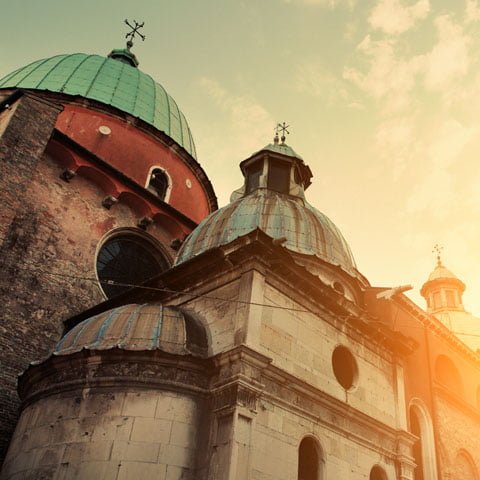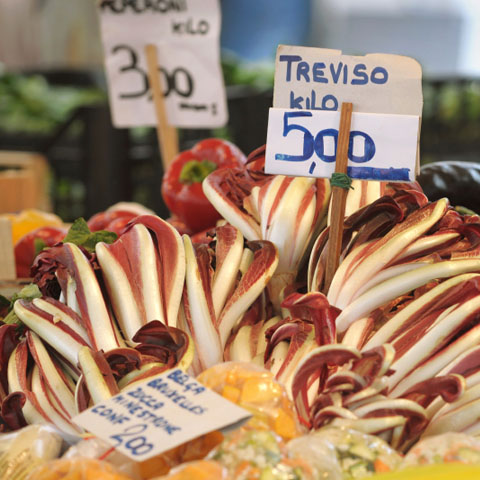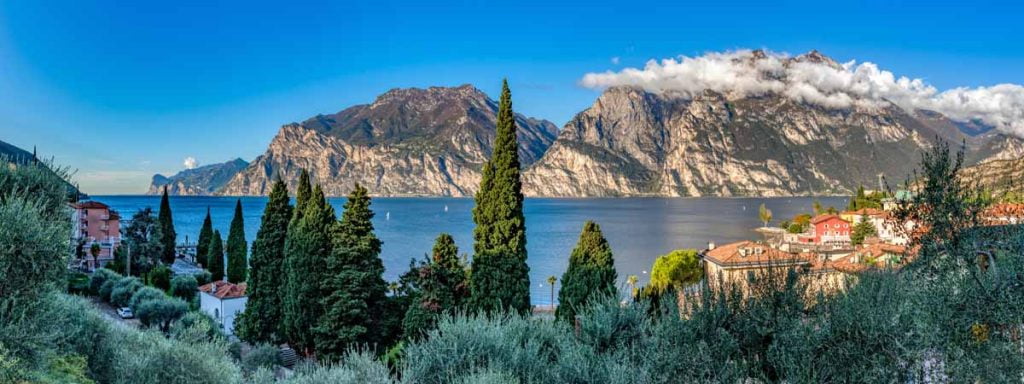It is unknown exactly when the area that would eventually become known as Treviso was originally settled, but it is generally accepted that the Treviso area was initially settled by the Celts. It is, however, known that the settlement was founded sometime before 89 BCE, as that is when the city, then known as Tarvisium, became a municipium of the Roman Empire.
Like most cities in Italy with a history dating back to antiquity, Treviso changed hands many times and saw a great deal of violence over the millennia. After the fall of the Roman Empire, the city saw massive economic and societal decline. However, after being miraculously spared by Atilla the Hun, it became an important trade center between the Byzantine Empire and the rest of the Italian Peninsula during the sixth century. It would eventually fall under the Byzantine Exarchate of Ravenna, but would be conquered by the Lombards not all that long afterward, and eventually would go on to be conquered by Charlemagne.
In the twelfth century, Treviso joined the Lombard League and gained its independence, falling under the control of various noble families over the centuries before eventually joining the Venetian Republic willingly in the mid-1300s. This brought Treviso a number of economic, architectural, engineering, and demographic benefits, but it also involved the city in Venice’s wars and military affairs. The Austrians, in particular, struggled to capture control of Treviso due to the fact that the city’s waterways made it an excellent supplier of both fish and grain. The Austrians and the Venetians fought over Treviso throughout the fourteenth century, with control of the city trading back and forth several times.
Treviso would remain under Venetian control until the late eighteenth century when it was conquered by France. After the fall of Napoleon, it would then trade again to the Austro-Hungarian Empire. The citizens of Treviso were displeased with the new rule, still feeling themselves to be a part of Venice and rebelled, driving their oppressors out, only for the Austrians to retaliate and bombard the town, forcing them to surrender. The town remained under Austrian rule until 1866 when the Veneto region was annexed to the Kingdom of Italy.
Despite finally joining Italy, however, Treviso’s hardest days were yet to come. Treviso suffered greatly during both World Wars. During World War I, Treviso was a highly strategic position on the Austrian front and multiple battles were held there, including the Battle of Vittorio Veneto, which helped to turn the course of the war. Then, during World War II, Treviso was one of the sites of the Italian concentration camps and was bombed numerous times by the allied forces, causing several historic medieval buildings to be destroyed.
Today, however, Treviso has largely moved past the more violent days of the past and now enjoys an era of peace and quiet with a relaxed and pleasant atmosphere.
ART
Due to its proximity to Venice and its inclusion in the Venetian Republic, Treviso shared much of its neighbor’s artistic history. Perhaps the most prolific artist to make his mark on Treviso was Tommaso da Modena. The works of Tommaso da Modena can be found all over Treviso, especially in the Church di San Nicolò and the Church of San Francesco, as well as in the Museo Civico di Santa Caterina.
Visitors to Treviso who have a love for art should not miss any of these locations. The painting of Madonna and Child in the Church of San Francesco is a wonder to behold, and the frescoes on the walls of the monastery chapterhouse in the Church of San Nicolò are considered excellent even by today’s standards. Meanwhile, the Life of Saint Ursula at the Museo Civico di Santa Caterina is perhaps considered Tommaso da Modena’s best work.
Art lovers taking a trip to Treviso should also make sure to visit the Luigi Bailo Civic Museum and the Museo Diocesano d’Arte Sacra di Treviso. The former contains a truly vast collection of both classical and contemporary art, ranging all sorts of styles. The latter, meanwhile, contains a plethora of archaeological finds from the region, including a set of marble statues, religious paintings from as far back as the thirteenth century, a collection of religious jewelry, crucifixes, and embossed books, and a collection of sacred tapestries and religious garments.
Another must-see for art lovers is the Capitolo dei Dominicani, which is located in the Treviso Seminary. The large room is home to 40 frescoes by Tommaso da Modena as well as a Byzantine-style crucifix. The ceiling features stunning wooden decorations that date back to the Middle Ages.
ARCHITECTURE
Treviso has no shortage of fascinating architectural sites. Perhaps the most notable of these is the Treviso Cathedral, or the Cathedral of San Pietro. Located at the north end of the town center, this landmark is famous for the seven domes that decorate its roof. On its western end, the entrance features a columned portico that resembles a Roman temple, and portions of the floor feature a mosaic from a paleo-Christian baptistery.
Another notable architectural site in Treviso is the Church of San Nicolò. This massive thirteenth-century structure features façades built from brick and it towers over the surrounding buildings. It has round piers and a vaulted timber roof, but other than that the exterior is sparsely decorated, allowing the sheer neck-craning enormity of the structure to speak for itself. The interior, however, is richly adorned with a wood-paneled ceiling, stone and brick archways, and a colorful tiled floor. Lovers of architecture might also want to visit the Church of San Francesco, which features a Romanesque design and a large bell tower.
Finally, for those lovers of architecture who occasionally wish to break away from the churches, there is no missing Treviso’s walls and gatehouses. Treviso, like many cities in Italy, has seen a great deal of combat over the centuries and thusly fortified itself against invasion. The walls of the old city at the center of town are still adorned with gates, watchtowers, and other fortifications. Some of the gatehouses, such as the Porta San Tommaso, Porta Santi Quaranta, and Porta Altinia, are quite impressive and ornate. Visitors can take a walk around the ramparts and see an excellent view of the Alps from the northern side.
For more modern architecture, travelers should visit the Brion Tomb, which was designed by twentieth century Italian architect Carlo Scarpa. The modernist resting place features a concrete wall with two rings that are intertwined. Along the wall is a solemn pool decorated with plants that features a concrete island in the middle. The tomb was commissioned by Onorina Tomasin-Brion, a local business woman, and, interestingly enough, the architect himself was buried next to the tomb.
Outside of Treviso, the town of Maser, which is located in the province of Treviso, is home to the Villa di Maser, which was designed by famed architect Andrea Palladio. The distinct style of the villa is characterized by classical elements that are indicative of Palladio’s renowned designs. The villa, which sits at the foot of the Maser Hills, also features sculptures by Alessandro Vittoria.
LITERATURE
Before joining the Venetian Republic, Treviso was considered a center of courtly love poetry and literature. However, most of the works that were written in the Middle Ages have been lost to the many sieges, conquests, and wars that Treviso has seen over the years and little evidence of this tradition remains.
Beyond this medieval period, there are a couple of interesting trivia facts to take note of, both relating to the famed author of the Divine Comedy, Dante Alighieri. Firstly, the town of Treviso was referenced to in the Divine Comedy itself. Secondly, Dante Alighieri’s son, Pietro Alighieri, is buried in the crypts of the Church of San Francesco.
CINEMA
Quite a few films have been set in Treviso or the surrounding province over the decades. A few of the most notable include Signore e Signori (1965), The English Patient (1996), Ripley’s Game (2002), Le conseguenze dell’amore (2004), Leoni (2015), Finché c’è prosecco c’è speranza (2017), and Destini (2019).
MUSIC
Treviso is home to the Studio Musica Music Academy, which hosts numerous annual events dedicated to musical greatness. Some of these events include the International Piano Festival, which is held from October through March and features many talented pianists from around the world. Treviso also hosts the International Conference on New Music Concepts, or ICNMC. The ICNMC is a fascinating event that brings together engineers, researchers, scientists, and, of course, musicians to discuss developments in music studies.
SCIENCE
In Treviso, there is definitely a love for conservation. Treviso is the home of the Natural Park of the Sile River, which preserves over 7,400 acres of meadow, wetland, river, and forest and is devoted to maintaining the area’s natural flora and fauna.
Treviso is also home to two botanical gardens: the Orto Botanico Conservativo Carlo Spegazzini, and the Orto Botanico Conservativo Francesco Busnello. The former botanical garden is devoted to preserving native species, crops, and environments for experimental study. Meanwhile, the latter devotes itself to the preservation of fruit plants that are in danger of extinction.
Visitors to Treviso will be delightfully surprised by the city’s impressive cultural offerings. Despite often being in the shadow of Venice, Treviso has a long history and rich treasures including beautiful frescoes by Tommaso da Modena, the stunning architecture of the Cathedral of San Pietro and the city’s other churches, and the expansive botanical gardens.
Don't just see Italy, live it.
Your dream trip to Italy has never been closer
No more endlessly scrolling travel sites. Our travel experts will craft the perfect, one-of-a-kind trip just for you.

300+
DESTINATIONS
We offer more Italian destinations than any travel site. Do and see more with Trips 2 Italy.
1 (of a kind)
ITINERARIES
Because your dream trip to Italy should be designed for you, not for the masses.
100%
PEACE OF MIND
From flights and accommodations, to food and activities - we take care of every detail.









